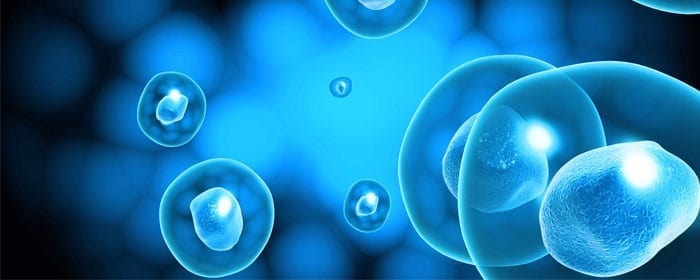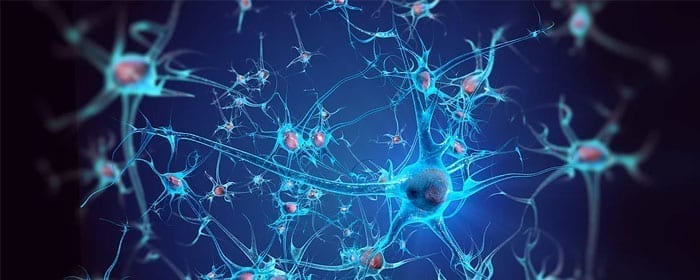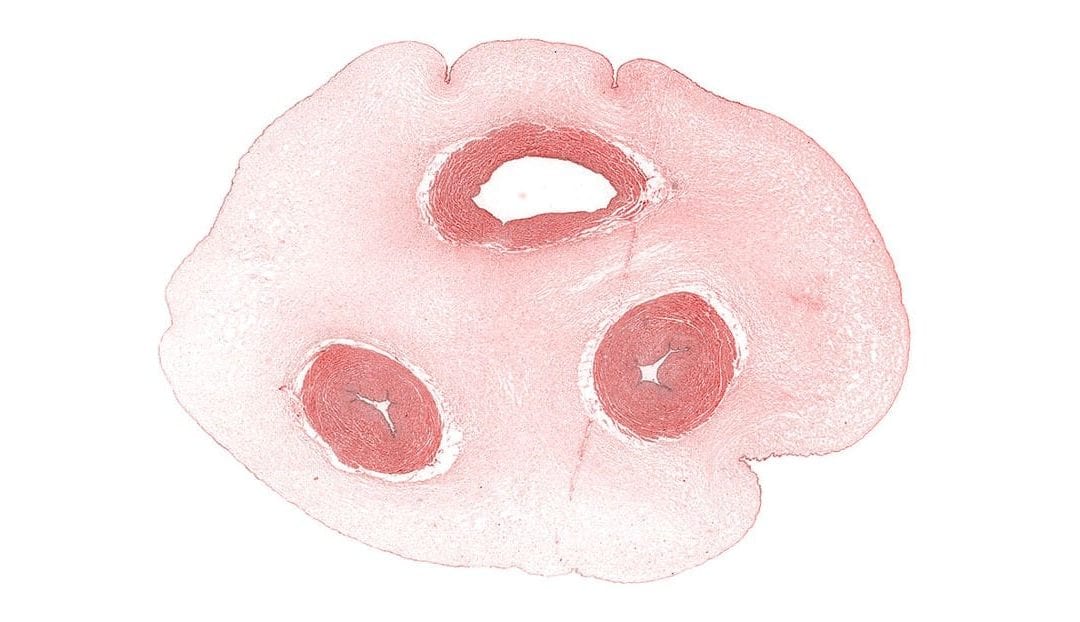
by admin | Mar 16, 2018 | Stem Cell Research
With the growing realization that stem cells can help countless patients suffering from various diseases and injuries has come more research into how stem cells can best be used for these purposes. The questions not only involve which patients can benefit and how, but also which types of stem cells are useful and for what purposes, and how each beneficial stem cell type can be best incorporated into different therapeutic approaches. A new publication in Stem Cells and Development covers the specific advantages of stem cells that are derived from human Wharton’s jelly, which comes from the umbilical cord.
Mesenchymal stem cells are often used for clinical purposes, and the gold standard tissue for isolating mesenchymal stem cells has been bone marrow tissue. A distinct advantage of human Wharton’s jelly-derived stem cells over bone marrow-derived stem cells is the ease with which they are isolated. Not only is it technically relatively simple to retrieve stem cells from the umbilical cord, but it is less invasive than doing so from the bone marrow.
In the current study, the researchers characterized the best way to isolate the mesenchymal stem cells from the Wharton’s jelly and also compared the stem cells that come from Wharton’s jelly to those that come from the bone marrow. According to their analysis, some of the critical advantages of mesenchymal stem cells deriving from Wharton’s jelly rather than from bone marrow are the relative abundance of genes associated with immune system functioning, cell adhesion, and proliferation. Each of these functions is important for stem cell therapeutic applications, and so having more genes that support these functions s beneficial.
The researchers also observed specific ways in which Wharton’s jelly mesenchymal stem cells affect the immune system. Based on their observations, they concluded that these stem cells are attractive candidates for therapies that target diseases of the central nervous system, including Parkinson’s disease, multiple sclerosis, and amyotrophoic lateral sclerosis (also known as ALS). Further research will help to clarify the potential of Wharton’s jelly, and more comparative research like that performed in this study will help us understand the best ways to use different stem cells for different therapeutic functions.

by admin | Feb 16, 2018 | Stem Cell Research
A popular type of stem cell in the research and clinical communities is what is known as the adipose tissue-derived mesenchymal stem cell, which are stem cells that come from fat tissue. A review published last year in Stem Cells International has provided a comprehensive picture of what makes these stem cells beneficial for treating disease and injury.
One characteristic of adipose tissue-derived mesenchymal stem cells that originally made them popular is the ease with which they are accessed. Gaining access to fat tissue is relatively simple compared to accessing other types, such as those from the bone marrow. Other attractive features have been their abundance and the ability to use them with no ethical concerns.
While all adipose tissue-derived mesenchymal stem cells have these advantageous features, there are a number of types of adipose tissue-derived mesenchymal stem cells, and researchers are still working to determine the relative advantages of each of these types. For instance, there are types that come from white adipose tissue and types that come from brown adipose tissue. Much brown adipose tissue exists in fetuses and newborns and transforms to white adipose tissue with aging. Understanding how these different types of adipose tissue work therapeutically will be important for determining when and how to use these cell types. Overall, though, it seems that adipose tissue-derived mesenchymal stem cells from younger patients proliferate at higher rates than those from older patients.
Adipose tissue-derived mesenchymal stem cells also differ in their properties depending on how they were harvested and the environment in which they are put. The two procedures for harvesting these cells are called resection and lipoaspiration. One study found that when cells were extracted with lipoaspiration, a higher abundance of cells could be obtained, whereas the proliferation of the cells was similar with both harvesting procedures. Environmental factors, including which trophic factors are present, the hydrostatic pressure, and the fluid sheer stress, also impact the ability of the cells to proliferate and differentiate. Other factors, such as the specific growth factors produced and the surface markers that are present, also impact the utility of adipose tissue-derived mesenchymal stem cells.

by admin | Jan 31, 2018 | Stem Cell Research
There is currently no highly effective treatment option for bone regeneration, so finding a way to regenerate bone has become a major focus in the field of tissue engineering. A recent study aimed to determine which of three different types of mesenchymal stem cells has the most promise for helping to regenerate bone in those who suffer from bone diseases like osteoporosis, caner, and Paget’s disease. The three types of mesenchymal stem cells that were investigated were bone marrow mesenchymal stem cells, Wharton’s jelly mesenchymal stem cells, and adipose mesenchymal stem cells.
The researchers found that all mesenchymal cell types regenerated bone. The lamellar bone defect sites they observed were filled in with fully mature bone several weeks after stem cell transplantation. Bone regeneration was time-dependent, with more bone growth observed the more time that went by after transplantation over the 12-week observation period. Transplantation of each cell type was also associated with an increase in inflammatory cells right after transplantation but no more inflammation after 4 weeks.
Overall, the bone marrow mesenchymal stem cells appeared to be best for regenerating bone, and the adipose mesenchymal stem cells appeared least promising. This stem cell type led to bone mineralization and to thicker connective tissue than the other two mesenchymal stem cell types. Umbilical cord mesenchymal stem cells and adipose mesenchymal stem cells led to similar connective tissue thickness.
Umbilical cord mesenchymal stem cells were better than the other two types of mesenchymal stem cells in one respect – they were better for the formation of new blood vessels. Blood vessel formation is critical during the regeneration of tissue because these vessels enable the transportation of both nutrients and waste.
These results help to clarify the relative advantages of different types of mesenchymal stem cells in bone regeneration. Given that both bone marrow mesenchymal stem cells and umbilical cord mesenchymal stem cells provided specific and unique benefits, future research may explore how to combine the use of these stem cell types in developing treatments for bone diseases.

by admin | Jan 11, 2018 | ALS, Stem Cell Research
Amyotrophic lateral sclerosis, known as ALS, is only partially understood, and there is no effective prevention or treatment of the disease. Those who are diagnosed with ALS, therefore, have few options for slowing its progression. The disease attacks cells of the nervous system called motor neurons. Thus, while one option for approaching ALS is to prevent the attack of motor neurons, another approach is to find a way to protect those cells of the nervous system.
Small proteins called neurotrophic factors have previously been shown to help motor neurons grow and survive longer. However, when scientists have tried to apply these neurotrophic factors in ALS patients, they have not made a difference in disease progression. Because stem cells offer a way to replace damaged cells, they are studied as potential candidates for therapeutic interventions in neurodegenerative diseases, such as ALS.
In this study, scientists combined stem cells and neurotrophic factors by inducing mesenchymal stem cells to secrete neurotrophic factors. Their main objective was to determine if injecting this type of stem cell into ALS patients is safe. They also aimed to determine if such cells may be clinically helpful for this group of patients.
The scientists gave 6 patients each the stem cells through two different types of injections. They then gave 14 patients a combination of the two types of injections. All patients were between the ages of 20 and 75 and were in the early stages of ALS. The patients were observed for 6 months following their injections. Any side effects that occurred as a result of the stem cell injections were mild or transient, so each of the techniques for administering the stem cells to ALS patients was deemed safe.
The researchers also used a test called the ALS-Functional Rating Scale-Revised to evaluate the clinical impact of the stem cell treatment on ALS patients. They found that 13 of the patients (or 87%) improved in their performance on the test, suggesting that the stem cells may have improved ALS symptoms. Further research will need to be conducted to determine if these mesenchymal stem cells that secrete neurotrophic factors can indeed help ALS patients – and if so, how they can best be used to combat the disease.

by admin | Jan 9, 2018 | Stem Cell Research
Wharton’s jelly is a rich source of stem cells, but some researchers believe its value is sometimes unappreciated. A recent review published in Stem Cells Translational Medicine synthesized an abundance of information on what is known about Wharton’s jelly. Because scientists often use inconsistent language to discuss observations and research results pertaining to Wharton’s jelly, the authors also proposed a nomenclature to help improve transparency related to methods and findings that involve Wharton’s jelly.
According to the authors, there are a number of advantages of stem cells that come from Wharton’s jelly that are making it a popular source of these cells. One critical benefit is the noninvasive nature of the stem cell collection. Because Wharton’s jelly is collected from tissue that would otherwise be discarded after the delivery of a baby, collecting the stem cells does not require its own invasive procedure.
Another apparent benefit of Wharton’s jelly is its therapeutic efficacy. Because basic science studies have demonstrated the potential for Wharton’s jelly-derived mesenchymal stromal cells to outperform other stem cell types in their ability to treat disease, these cells are now being tested in a number of clinical trials.
For progress to be made with Wharton’s jelly-derived stem cells, it is important that researchers have a common language with which to talk about the human umbilical cord, which is the source of these cells. While this connective tissue is simpler than other types of connective tissue, it is still unclear how to differentiate the different types of cells that come from Wharton’s jelly. More precise language and definitions should help overcome this problem.






 St. Petersburg, Florida
St. Petersburg, Florida
